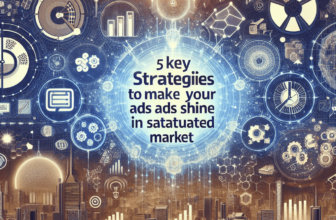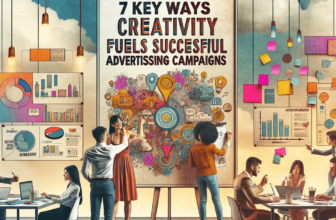
Understanding the Psychology of Advertising
Advertising is a powerful tool that can influence consumer behavior and decision-making processes. By tapping into the principles of psychology, advertisers can create campaigns that resonate with their target audience and drive desired actions. In this article, we will explore how advertising leverages psychological techniques and the impact it has on consumers.
The Power of Persuasion
One of the key aspects of advertising is persuasion. Advertisers aim to persuade consumers to buy their products or services, and they do so by appealing to various psychological factors. One such factor is the use of emotions.
Emotional appeals are a common tactic in advertising because emotions play a significant role in decision-making. By evoking emotions such as happiness, excitement, or fear, advertisers can create a connection with consumers and influence their choices. For example, a heartwarming advertisement featuring a family can evoke feelings of love and togetherness, making consumers more likely to associate those emotions with the advertised product.
Another psychological technique used in advertising is social proof. People tend to look to others for guidance when making decisions. Advertisers leverage this by showcasing testimonials, reviews, or endorsements from satisfied customers. Seeing others’ positive experiences can create a sense of trust and influence consumers to try the product or service.
The Role of Cognitive Biases
Cognitive biases are inherent flaws in human thinking that can affect decision-making. Advertisers are well aware of these biases and use them to their advantage. Let’s explore a few common cognitive biases and how they are utilized in advertising.
1. The Anchoring Bias: This bias occurs when people rely heavily on the first piece of information they receive. Advertisers often use this bias by presenting a higher-priced product first, making the subsequent lower-priced products seem like a better deal.
2. The Scarcity Effect: People tend to place a higher value on things that are scarce or limited. Advertisers leverage this bias by creating a sense of urgency or exclusivity. Limited-time offers or limited stock availability can trigger the fear of missing out (FOMO) and drive consumers to make a purchase.
3. The Bandwagon Effect: This bias refers to the tendency of individuals to follow the actions or beliefs of a larger group. Advertisers capitalize on this by creating ads that highlight the popularity or widespread use of their products. Phrases like “Join the millions who already love our product” tap into the bandwagon effect and make consumers feel like they should be part of the crowd.
The Influence of Subliminal Messaging
Subliminal messaging is a controversial technique that involves embedding hidden messages or symbols in advertisements. These messages are designed to bypass the conscious mind and directly influence the subconscious. While the effectiveness of subliminal messaging is still debated, advertisers have been known to use subtle tactics to sway consumer behavior.
For example, fast-food advertisements often incorporate images or sounds that evoke hunger, even if they are not explicitly related to the product being advertised. The goal is to create a subconscious association between the stimulus and the desired behavior, in this case, feeling hungry and craving fast food.
It’s important to note that subliminal messaging is heavily regulated in many countries, and advertisers must adhere to ethical guidelines. However, the use of subtle cues and psychological triggers is still prevalent in advertising.
The Rise of AI in Advertising
As technology advances, so does the field of advertising. One emerging trend is the use of artificial intelligence (AI) in creating and optimizing ad campaigns. AI-powered platforms like Adcreative.ai are revolutionizing the way advertisers create, test, and optimize their ads.
Adcreative.ai utilizes machine learning algorithms to analyze data and generate effective ad creatives. By understanding the psychology behind consumer behavior, the platform can suggest compelling visuals, persuasive copy, and engaging calls-to-action. This not only saves advertisers time and resources but also enhances the effectiveness of their campaigns.
If you’re interested in trying out Adcreative.ai, you can also take advantage of the Adcreative.ai coupon available on TopTrustReview. This coupon allows you to access the platform at a discounted rate, making it even more accessible for businesses of all sizes.
Conclusion
Understanding the psychology of advertising is crucial for both advertisers and consumers. By recognizing the techniques used in advertising, consumers can make more informed decisions and be aware of the psychological factors at play. Advertisers, on the other hand, can leverage psychological principles to create impactful campaigns that resonate with their target audience.
From emotional appeals to cognitive biases and the use of AI, advertising continues to evolve and adapt to the changing landscape. By staying informed about the psychology behind advertising, we can navigate the world of marketing with a better understanding of its influence on our decision-making processes.







